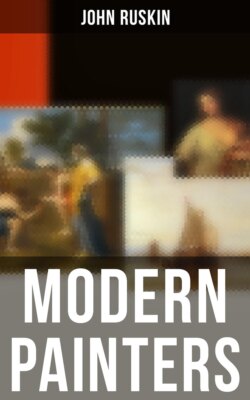Читать книгу Modern Painters - John Ruskin - Страница 29
На сайте Литреса книга снята с продажи.
CHAPTER VI.
RECAPITULATION.
ОглавлениеTable of Contents
It ought farther to be observed respecting truths in general, that those are always most valuable which are most historical, § 1. The importance of historical truths.that is, which tell us most about the past and future states of the object to which they belong. In a tree, for instance, it is more important to give the appearance of energy and elasticity in the limbs which is indicative of growth and life, than any particular character of leaf, or texture of bough. It is more important that we should feel that the uppermost sprays are creeping higher and higher into the sky, and be impressed with the current of life and motion which is animating every fibre, than that we should know the exact pitch of relief with which those fibres are thrown out against the sky. For the first truths tell us tales about the tree, about what it has been, and will be, while the last are characteristic of it only in its present state, and are in no way talkative about themselves. Talkative facts are always more interesting and more important than silent ones. So again the lines in a crag which mark its stratification, and how it has been washed and rounded by water, or twisted and drawn out in fire, are more important, because they tell more than the stains of the lichens which change year by year, and the accidental fissures of frost or decomposition; not but that both of these are historical, but historical in a less distinct manner, and for shorter periods.
§ 2. Form, as explained by light and shade, the first of all truths. Tone, light and color are secondary.
Hence in general the truths of specific form are the first and most important of all; and next to them, those truths of chiaroscuro which are necessary to make us understand every quality and part of forms, and the relative distances of objects among each other, and in consequence their relative bulks. Altogether lower than these, as truths, though often most important as beauties, stand all effects of chiaroscuro which are productive merely of imitations of light and tone, and all effects of color. To make us understand the space of the sky, is an end worthy of the artist's highest powers; to hit its particular blue or gold is an end to be thought of when we have accomplished the first, and not till then.
§ 3. And deceptive chiaroscuro the lowest of all.
Finally, far below all these come those particular accuraciesor tricks of chiaroscuro which cause objects to look projecting from the canvas, not worthy of the name of truths, because they require for their attainment the sacrifice of all others; for not having at our disposal the same intensity of light by which nature illustrates her objects, we are obliged, if we would have perfect deception in one, to destroy its relation to the rest. (Compare Sect. II. chap. V.) And thus he who throws one object out of his picture, never lets the spectator into it. Michael Angelo bids you follow his phantoms into the abyss of heaven, but a modern French painter drops his hero out of the picture frame.
This solidity or projection then, is the very lowest truth that art can give; it is the painting of mere matter, giving that as food for the eye which is properly only the subject of touch; it can neither instruct nor exalt, nor please except as jugglery; it addresses no sense of beauty nor of power; and wherever it characterizes the general aim of a picture, it is the sign and the evidence of the vilest and lowest mechanism which art can be insulted by giving name to.
